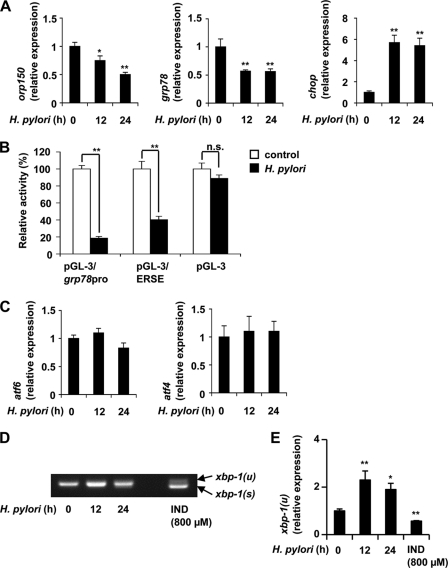FIGURE 2.
Inhibitory effects of H. pylori on transcription of ER stress response-related genes. AGS cells were co-cultured with H. pylori at a bacteria:cell ratio of 200:1 for the indicated periods (A and C–E) or treated with indomethacin (IND) for 24 h (D and E). A, C, and E, the relative expression of each gene was monitored by real-time RT-PCR using a specific primer for each gene. Values normalized to the actin gene are expressed relative to the control sample. B, AGS cells were co-transfected with pRL-SV40 (internal control plasmid carrying the R. reniformis luciferase gene) and pGL-3 or its derivatives (pGL-3/grp78pro and pGL-3/ERSE) and cultured for 24 h. Cells were then co-cultured with or without H. pylori at a bacteria:cell ratio of 200:1 for 24 h, and P. pyralis luciferase activity was measured and normalized for R. reniformis luciferase activity. The 100% value of the P. pyralis luciferase activity is 5.4 × 106, 7.4 × 105, or 2.4 × 104 units for pGL-3/grp78pro, pGL-3/ERSE, or pGL-3, respectively. D, RT-PCR was performed with total RNAs and primer sets for detecting the un-spliced (xbp-1(u)) and spliced (xbp-1(s)) forms of xbp-1 mRNA, which were separated by agarose gel electrophoresis. Values are the mean ± S.D. (n = 3). **, p < 0.01; *, p < 0.05; n.s., not significant.

